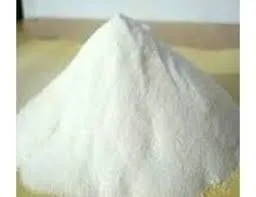
Dez . 11, 2024 09:44 Back to list
Understanding the HS Code for Redispersible Polymer Powder Applications and Regulations
Understanding Redispersible Polymer Powder and Its HS Code
Redispersible polymer powders (RDP) have become increasingly significant in various industries, particularly in construction, paints, coatings, and adhesives. Their versatility and ability to improve product performance make them a popular choice among manufacturers. A key consideration for businesses involved in the import and export of these materials is understanding their classification under the Harmonized System (HS) Code, which facilitates international trade by providing specific codes for various goods.
What is Redispersible Polymer Powder?
Redispersible polymer powder is a dry polymeric substance that, when mixed with water, forms a stable dispersion. It is produced through a spray-drying process that transforms liquid polymer dispersions into a powdered solid. These powders are often used in formulations that require enhanced performance characteristics such as adhesion, flexibility, water resistance, and durability.
In the construction industry, RDPs are commonly utilized in tile adhesives, dry mortars, and external insulation finishing systems. They improve the workability of mixtures and enhance the durability of end products. Additionally, RDPs can also be found in paints and coatings to provide better binding properties and reduce the likelihood of cracking.
Importance of HS Code
The Harmonized System (HS) Code is an internationally standardized system of names and numbers to classify traded products. Created by the World Customs Organization (WCO), it provides a systematic way for countries to categorize the complexities of international trade. The HS Code allows customs authorities to identify products for duties and tariffs, control the flow of goods, and collect statistics on international trade.
For businesses involved in the trade of redispersible polymer powders, accurate classification under the HS Code is essential. The specific HS classification affects import duties, compliance with international regulations, and overall logistics. Misclassification can lead to delays, fines, or increased shipping costs.
redispersible polymer powder hs code

Identifying the HS Code for RDPs
Typically, redispersible polymer powders fall under Chapter 39 of the HS Code, which pertains to plastics and articles thereof. Specifically, they may be identified under the subheading for polymer powders and emulsions. The exact HS Code can vary based on specific formulations, chemical compositions, and intended uses. It is vital for manufacturers and traders to consult the appropriate customs authorities or utilize tools provided by trade associations to ensure correct classification.
Benefits of Using RDPs
The adoption of redispersible polymer powders can yield numerous benefits, including
1. Enhanced Performance RDPs improve the adhesion and flexibility of products. 2. Environmental Resistance They provide better resistance to moisture, temperature changes, and UV exposure. 3. Cost-effectiveness By improving the quality and longevity of the finished product, RDPs can provide significant savings in maintenance and replacement costs. 4. Ease of Use They allow for easier application in construction and manufacturing processes.
Conclusion
Redispersible polymer powder is a crucial component in modern manufacturing across various sectors, especially in the construction industry. Understanding and accurately classifying RDPs under the appropriate HS Code is fundamental for businesses engaged in international trade. This classification not only ensures compliance with regulations but also optimizes logistics and cost efficiency. As the demand for advanced materials continues to grow, staying informed about product classifications and market trends will be key for companies looking to stay ahead in this competitive landscape.
-
Unlocking the Benefits of HPMC Products: A Gateway to Versatile Applications
NewsAug.07,2025
-
Unleashing the Potential of HPMC Ashland: A Comprehensive Look
NewsAug.07,2025
-
Tile Bonding Cellulose: The Key to Superior Adhesion and Durability
NewsAug.07,2025
-
Hydroxypropyl Methylcellulose Powder: The Versatile Component in Modern Pharmaceuticals
NewsAug.07,2025
-
Hydroxyethyl Cellulose: The Versatile Solution for Various Industries
NewsAug.07,2025
-
Hydroxyethyl Cellulose (HEC): The Versatile Polymer for Various Applications
NewsAug.07,2025







